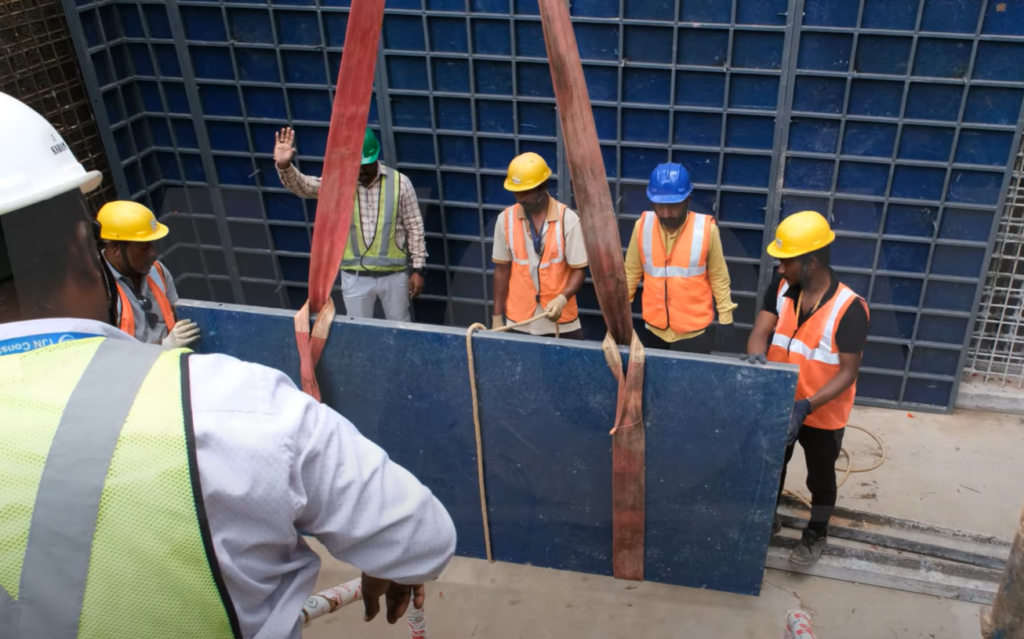In today’s world, environmental sustainability isn’t just a trend; it’s an urgent call to action. With growing awareness around resource depletion, pollution, and climate change, industries everywhere are being challenged to adopt more sustainable practices. A key approach driving this change is the circular economy—a model that focuses on minimising waste by keeping materials in use for as long as possible through recycling and repurposing. At the heart of this shift in construction is the rise of recycled plastic materials, offering a solution that’s both innovative and essential for a greener future. Among the various innovations contributing to this model, recycled plastic construction materials stand out as a game-changer, particularly in the building sector.
Understanding the Circular Economy
The circular economy is a regenerative system that contrasts with the traditional linear economy, which operates on a “take, make, dispose” model. In a circular economy, products, materials, and resources are kept in use for as long as possible. The core idea is to minimise waste and make the best possible use of finite resources. This is achieved through recycling, refurbishing, and reusing materials, ultimately reducing the need for new raw materials and lowering environmental impact.
In the context of construction, a circular economy means using materials that can either be recycled at the end of their lifecycle or repurposed for other projects. This contrasts with traditional construction materials, like wood or conventional concrete, which often result in significant waste that cannot be reused. By transitioning to more sustainable, recyclable materials, the construction industry can play a pivotal role in reducing environmental harm while contributing to long-term sustainability.
The Role of Recycled Plastic in Construction
Recycled plastic construction materials have emerged as a sustainable alternative to traditional building materials like wood, concrete, and steel. These materials are made from post-consumer or post-industrial plastic waste, which would otherwise end up in landfills or oceans. Instead of contributing to pollution, this plastic waste is processed into durable and versatile building materials like recycled plastic sheets, boards, and other components used in construction.

Plastic, once viewed as a significant environmental threat, is being reimagined through recycling technologies to support eco-friendly construction. It offers several advantages in construction, including resistance to weather conditions, flexibility, lightweight properties, and a high degree of recyclability. Recycled plastic boards and sheets are used in various applications such as shuttering (moulds for concrete), insulation, and even structural elements like beams and posts.
The adaptability of recycled plastic allows it to replace traditional materials without sacrificing quality or durability. In fact, recycled plastic often performs better than conventional materials in some applications, such as resisting water, pests, and chemicals. The production of recycled plastic materials also requires less energy compared to new materials, making it an eco-friendly option that helps reduce the carbon footprint of construction projects.
Benefits of Reusing Plastic Materials
The reuse of plastic materials in construction brings several benefits that align perfectly with the principles of the circular economy:
1. Waste Reduction
One of the primary advantages of using recycled plastic in construction is waste reduction. By repurposing plastic waste that would otherwise contribute to pollution, the construction industry helps reduce the amount of plastic that ends up in landfills or oceans. This shift not only addresses the global plastic pollution crisis but also minimises the strain on natural resources by reducing the demand for virgin materials.
2. Energy Efficiency
Producing new construction materials from virgin resources is energy-intensive and generates significant carbon emissions. On the other hand, recycling plastic requires far less energy. By using recycled plastic materials, the construction industry can cut down on energy consumption and reduce the environmental impact associated with manufacturing. This contributes to the fight against climate change by lowering greenhouse gas emissions.
3. Durability and Longevity
Recycled plastic construction materials, such as boards and plastic shuttering sheets, are incredibly durable. They are resistant to weathering, chemicals, and biological factors like termites, which can deteriorate traditional materials like wood. This durability extends the lifespan of the material, reducing the need for frequent replacements and minimising waste over time. In a circular economy, longevity is key, and recycled plastic construction materials align perfectly with this principle.
4. Economic Viability
While the initial cost of recycled plastic materials may be comparable or slightly higher than traditional materials, their long-term benefits make them economically viable. The durability and low maintenance requirements of recycled plastic reduce overall costs for builders. Moreover, many governments and regulatory bodies are incentivising the use of sustainable materials in construction projects, offering subsidies or tax breaks for eco-friendly practices.
5. Sustainability and Resource Conservation
By using recycled plastic in construction, the industry contributes to the conservation of natural resources. Unlike wood, which requires deforestation, or steel and concrete, which rely on mining and significant energy consumption, recycled plastic is made from waste that already exists. This helps conserve raw materials and reduces the ecological footprint of construction projects, making them more sustainable in the long run.
Examples of Circular Economy Projects
Several construction projects around the world have embraced the circular economy by incorporating recycled plastic construction materials. These projects serve as inspiration for the industry, showcasing how innovative materials can contribute to sustainable development:
1. Plastic Roads in India
India is a global leader in using recycled plastic to build roads, a concept pioneered by Dr. Rajagopalan Vasudevan. This process involves combining shredded plastic with bitumen, creating more durable and weather-resistant roads.

States such as Tamil Nadu, Maharashtra, and Karnataka have extensively used this technology. By 2024, over 100,000 kilometres of roads had been constructed using plastic waste, contributing to both road durability and environmental sustainability. This practice also complements the principles of green building materials by reducing the reliance on traditional asphalt.
2. Eco-Friendly Buildings by Pune’s Green Build Products
Pune-based Green Build Products manufactures construction materials, including plastic shuttering sheets, bricks, and tiles made from recycled plastic and industrial waste. These materials are used in sustainable building projects across India, offering a green construction alternative to traditional materials like wood or steel. The use of recycled plastic shuttering sheets not only helps in waste management but also provides more flexibility and durability in construction projects.
3. Recycled Plastic Homes in Hyderabad
A Hyderabad startup, Bamboo House India, has been constructing affordable homes using recycled plastic materials. These homes, designed for urban slums and rural areas, utilise several tons of plastic waste per structure. The use of plastic sheets in such homes ensures both cost-efficiency and resistance to harsh weather conditions, promoting eco-friendly construction. This initiative highlights the practical application of plastic shuttering sheets in low-cost housing projects, tackling issues like plastic waste management and affordable housing simultaneously.
Conclusion
Recycled plastic construction materials are a significant contributor to the circular economy, offering a sustainable alternative to traditional building materials. Their ability to reduce waste, conserve resources, and improve the sustainability of construction projects makes them an essential component of modern eco-friendly construction. As the construction industry continues to adopt greener practices, the role of recycled plastic materials will only grow, providing a scalable solution for future development.
The shift towards a circular economy is no longer an option but a necessity, and recycled plastic sheets and other plastic-based materials are paving the way for more sustainable and resilient construction projects. By embracing these materials, the construction industry can help build a future where sustainability is at the core of development.

